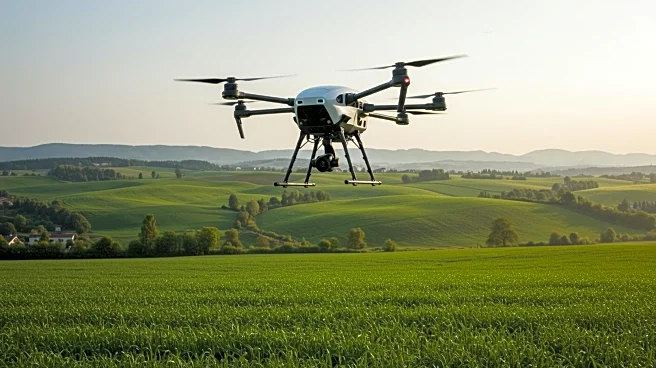Rapid Read • 8 min read
A study conducted by the University of Sheffield has discovered that bees use their flight movements to facilitate accurate learning and recognition of complex visual patterns. This finding could significantly impact the development of next-generation artificial intelligence (AI). The research involved creating a digital model of a bee's brain, which demonstrated how bees' movements during flight help shape visual input and generate unique electrical messages in their brains. These movements allow bees to efficiently identify predictable features of their environment, showcasing their ability to learn and recognize complex visual patterns with minimal brain cells. The study suggests that future AI systems, including robotics and self-driving vehicles, could benefit from mimicking these natural strategies to enhance intelligence and efficiency.
AD
The implications of this study are profound for both biology and AI technology. By understanding how bees use minimal neural resources to solve complex visual tasks, researchers can develop AI systems that are more efficient and require less computational power. This could lead to advancements in robotics and autonomous systems, making them smarter and more capable of interacting with their environments. The study highlights the potential for AI to evolve by integrating movement-based learning strategies, which could reduce the need for extensive computing networks and energy consumption. Industries involved in AI development, robotics, and autonomous vehicles stand to gain significantly from these insights, potentially leading to more sustainable and cost-effective technologies.
The study opens the door for further research into how movement-based learning can be applied to AI systems. Researchers may explore how these principles can be integrated into existing AI models to improve their efficiency and adaptability. The findings could also influence the design of future robots and autonomous systems, encouraging developers to incorporate movement-based strategies into their programming. As the study gains attention, it may prompt collaborations between AI researchers and biologists to explore other natural intelligence strategies that can be harnessed for technological advancements.
The study raises interesting questions about the relationship between brain size and intelligence. It challenges the notion that larger brains are necessary for complex computations, suggesting that even small neural networks can perform advanced tasks. This could lead to a reevaluation of how intelligence is measured and understood in both biological and artificial systems. Additionally, the research underscores the importance of considering the interaction between an organism's movements and its environment in understanding cognitive processes, which could have broader implications for fields such as neuroscience and psychology.
AD
More Stories You Might Enjoy










